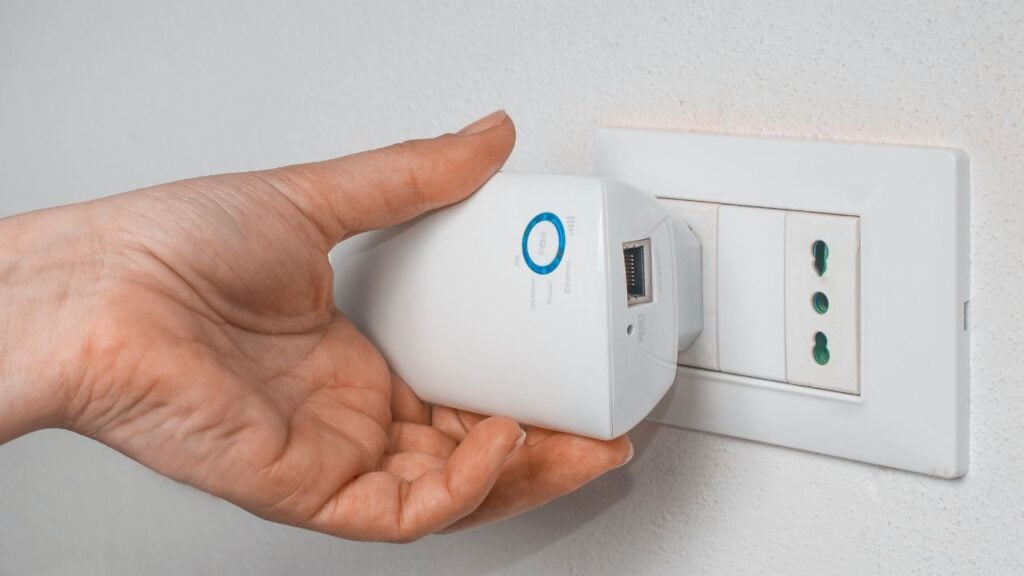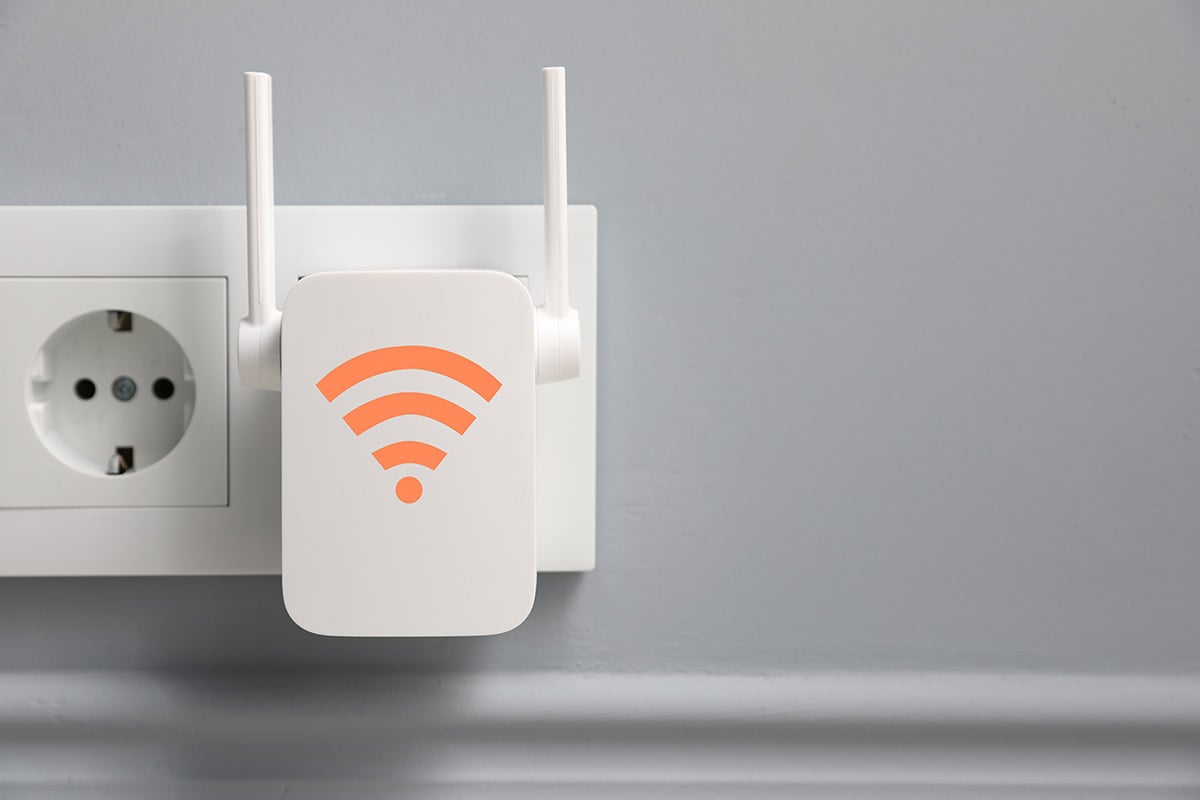What should I look for when choosing a WiFi repeater?
Table of Contents

Price, compatibility, or ease of configuration are some of the aspects to consider when choosing a suitable WiFi repeater
Raising your mobile phone as high as possible or moving to a corner of the room to add a WiFi line and speed up the connection are experiences that are as common as they are annoying. And they denote an obvious problem: the internet signal does not reach every corner of the home or business as well as it should. So how do you fix this? In many cases, it is enough to install a WiFi repeater.
The repeater is a device that plugs into an electrical socket and picks up all the signals from our WiFi network that it detects and then sends them out again. Or, as the name suggests, repeating them.
Sometimes the router is located at one end of the home or office. For this reason, it is not uncommon for people at the other end to experience signal problems. The signal is weak and is not sufficient to connect to the internet smoothly.
But if a WiFi repeater is placed in the middle of the road, it will give the signal a boost and it will travel stronger, thus eliminating the connection problems.
An inexpensive and easy-to-install solution, as all you need is a socket to plug the device into to increase WiFi coverage. Many repeaters have an app that makes them even simpler to set up, making them plug-and-play. And because they have been on the market for many years, they are already a proven technology that can be found and purchased at very affordable prices.
How can WiFi obstacles be overcome?
As a general rule, WiFi signal range data published by manufacturers refer to measurements under optimal conditions of temperature, humidity, and in open spaces. But the reality is different. The routers are installed in homes or offices, where there are tables, chairs, shelves, furniture, doors, rooms…
As it passes through these obstacles, the signal loses strength, speed, and range. In addition, during its trajectory, it creates refractions or bounces, which generate interference and degrade the efficiency and quality of the WiFi.
Choosing a WiFi repeater does not directly solve these problems. How? By adding a point where the WiFi signal is repeated and amplified so that it can reach further and serve a greater number of devices that would otherwise not be connected.
How do you know if you need to install a WiFi repeater?
Constantly facing connection problems is one of the most obvious signs that you might want to choose a WiFi repeater. However, there are many applications designed to accurately measure the speed and range of the network and provide reliable data on its performance.
For range testing, there are several mobile apps, such as Signal Strength, or more comprehensive programs, such as Acrylic Wi-Fi Analyzer. A powerful tool that allows users to observe how the Received Signal Strength Indicator (RSSI) graph fluctuates as they move around the installation. The idea is that, regardless of location, this value should not fall below -75. When the RSSI is between -75 and -100, likely, the connection is not good and action needs to be taken.
To analyze the speed, you can use a multitude of online tests such as Speedtest, often created by the various internet providers. An extremely quick and easy method with which you can find out the upload speed, download speed, and other factors such as latency.
It is always advisable to measure this data from different devices and compare the results, including mobile phones and computers, as their WiFi hardware and antennas are different. If both have a good connection, likely, future devices will not face problems either.
Where the RSSI is lower than -75, it may be advisable to install a WiFi repeater, to help the signal reach all corners. Although for more resource-intensive tasks, such as real-time online gaming, this may not be sufficient, it will allow for smooth surfing and social networking.
How to choose a WiFi repeater?

Several aspects should be taken into account when choosing a WiFi repeater to choose the right model.
Compatibility is undoubtedly one of the most critical issues. Typically, the cheapest repeaters only support the 2.4 GHz frequency band. If the WiFi works on 5 GHz or 6 GHz, it is essential to make sure that you choose a WiFi repeater that works on these bands. It is also vital to check its range, to verify that the device will be sufficient to cover the desired area and eliminate dead zones.
Additional features should also be considered. Some users have specific needs and should look for a repeater that meets those needs. For example, a dual-band repeater or an Ethernet port that enables a wired connection.
Other factors are less technological, but just as important when choosing a WiFi repeater, such as price, design, reviews, and location.
When it comes to price, it should not be forgotten that cheap can be expensive. While there are options for all budgets, it is crucial to make sure that the cheapest ones meet basic needs and do not sacrifice quality. Aesthetics can also play an important role in deciding which model to choose.
On the other hand, researching the opinions of people who have already purchased that particular repeater is the most reliable way to find out if it meets your expectations and solves your signal problems. And, once you have purchased it, you need to get the location where you install it right. Not only to get the most out of its capabilities but also to make sure you have a place to plug it in. These devices are wide and, if plugged into a power strip or a burglar, they could clash with other devices.
What about security?
When a user decides to choose a WiFi repeater, security may be one of his main concerns. Per se, these solutions do not pose any threat to the network, as the security level is not altered and the key is not changed.
However, it is important to keep a couple of things in mind. Repeaters allow the signal to reach further. As a result, the level of WiFi exposure increases considerably. The network can be accessed from a greater distance, making it easier for intruders to enter or for attacks to be carried out from further away.
In addition, if the repeater allows connection via network cable or USB, extreme caution should be taken. Especially when it is installed in a public and unattended place. Anyone could connect to it to obtain configuration information or even configure it in an insecure manner. For this reason, it is essential to change passwords and place them in areas that are out of sight and not easily accessible.
With all this in mind, choosing a WiFi repeater and taking advantage of its potential will be a much simpler task.